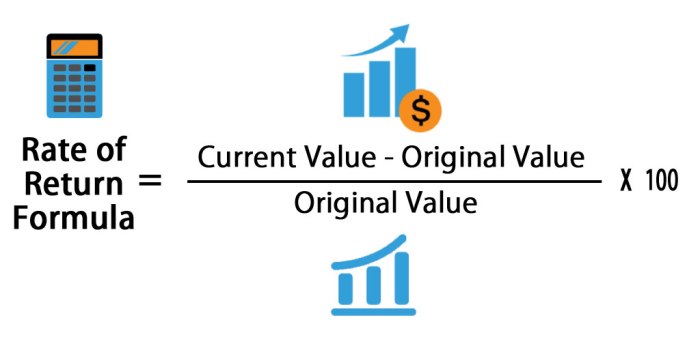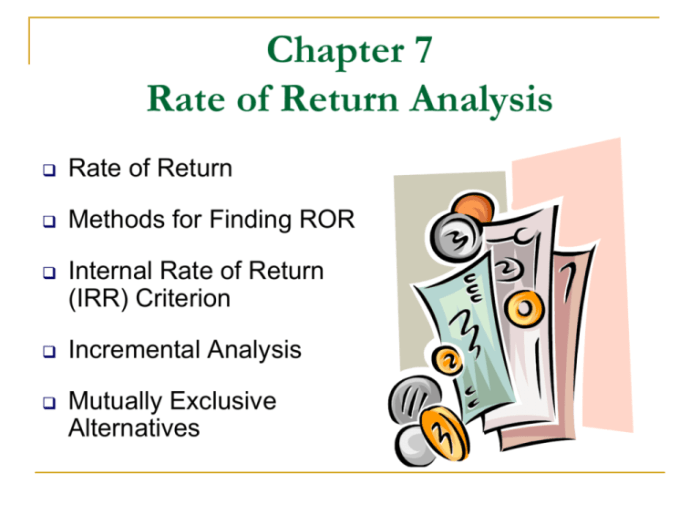Rate of Return Chapter 3 Lesson 6: Unveiling the Fundamentals of Investment Analysis. Embark on a journey into the realm of return calculations, uncovering the secrets of evaluating investment performance and maximizing returns.
Delving into the intricate world of rate of return, this lesson provides a comprehensive overview of its significance in investment decision-making. Explore the various types of return calculations, the influential factors that shape returns, and the practical applications of this crucial metric.
Understanding Rate of Return

The rate of return (ROR) is a fundamental concept in investment analysis. It measures the profitability of an investment by calculating the percentage return on the initial investment. Understanding the different types of ROR calculations and the factors that influence it is crucial for making informed investment decisions.
There are several types of ROR calculations, including annualized rate of return, internal rate of return (IRR), and modified internal rate of return (MIRR). Each calculation method serves a specific purpose and provides valuable insights into the performance of an investment.
Factors Affecting Rate of Return
Numerous factors can impact the rate of return on an investment. These include:
- Investment horizon:The length of time an investment is held can significantly affect the ROR. Long-term investments generally have higher potential returns but also carry more risk.
- Risk tolerance:Investors with a higher risk tolerance are willing to invest in assets with the potential for higher returns but also greater volatility.
- Market conditions:Economic conditions, interest rates, and political events can all influence the ROR of an investment.
Calculating Rate of Return
Calculating the ROR of an investment involves determining the change in value over a specific period of time. The following formula is used to calculate the annualized rate of return:
ROR = (Ending value
Beginning value) / Beginning value x 100%
For example, if an investment with an initial value of $10,000 grows to $12,000 after one year, the annualized ROR would be:
ROR = (12,000
10,000) / 10,000 x 100% = 20%
Applications of Rate of Return
The ROR is widely used in investment decision-making. It helps investors:
- Compare the performance of different investment options
- Evaluate the returns on investment portfolios
- Make informed decisions about asset allocation
Limitations of Rate of Return, Rate of return chapter 3 lesson 6
While the ROR is a useful metric, it has certain limitations:
- Does not consider risk:The ROR does not account for the level of risk associated with an investment.
- Can be misleading over short periods:The ROR can be misleading over short periods, especially during market fluctuations.
- Does not consider liquidity:The ROR does not take into account the liquidity of an investment, which affects the investor’s ability to access funds.
FAQ Summary: Rate Of Return Chapter 3 Lesson 6
What is the significance of rate of return in investment analysis?
Rate of return serves as a key indicator of the profitability and efficiency of an investment, allowing investors to assess the return generated relative to the initial investment.
How do different types of return calculations impact investment decisions?
Various return calculations, such as annualized rate of return, internal rate of return, and modified internal rate of return, provide distinct perspectives on investment performance, enabling investors to make informed choices based on their specific investment objectives and risk appetite.
What are the limitations of using rate of return as a sole measure of investment performance?
While rate of return is a valuable metric, it is important to consider other factors such as risk, liquidity, and investment horizon when making investment decisions. Relying solely on rate of return may lead to an incomplete assessment of investment performance.

